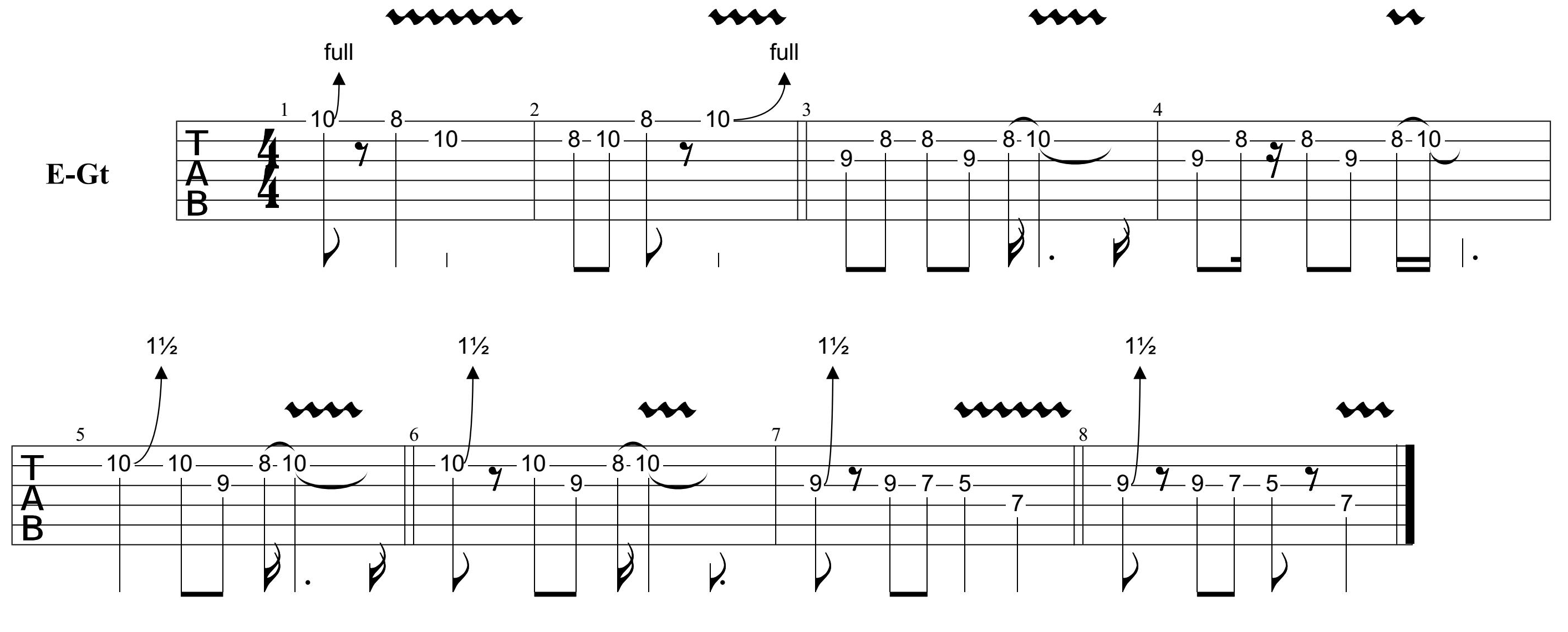The Minor Pentatonic Scale has to be one of the most common used scales in Rock & Blues guitar playing. Most guitarists starting out try to get to grips with this simple 5 note scale. But is it really so simple to use the Minor Pentatonic Scale? Lets look at this question in more detail.
The main ingredients of any guitar solo are phrase, bends vibrato and the use of rests. The use of rests I hear someone say? Yes, It's not what you play it's what you don't play. You can also create more melodic solos with the Minor Pentatonic Scale. With only 5 notes you have wider intervals and wider intervals create more melody.
The scale is divided in to five positions. We can categorise certain licks in to certain positions. This is what I call positional playing. Take a look at the guitar licks below. These licks are written in the second position of the scale. I am creating this post with the assumption that you have some knowledge of the scale. If not then don't worry because there is a link here: pentatonic Scale in Am; to a pdf booklet that you can download and study to help you get to grips with this exercise.
You can view bars 1 and 2, 3 and 4, 5 and 6 as one lick to the two bars or one lick for each bar 1 to 6. You can see where the double lines are in the exercise dividing the licks in to two bars. However I am going to look at one lick for each bar to make things more simple to break down.
Lick 1 we have a bend followed by a rest and then vibrato on the held note. This creates good expression in guitar solos. Lick 2 finishes with a bend but has a rest before it. Notice how the rest introduces the bend. Lick 3 we have a hammer on at the end and vibrato on the last note. The last two notes hammer the lick home to the listener. Notice in lick 4 we have lick 3 with an extra rest. The added rest really makes it stand out. Lick 5 we have a tone and a half bend followed by a rest. The rest makes the bend for the listener and with a hammer on thrown in to the lick as well massive expression is created. Licks 6 and 7 are almost the same but notice how the second rest before the last note makes lick 7 so much better.

This post has covered just a few examples of guitar licks in the Minor Pentatonic Scale. Pentatonics come in many variants and I may cover some of those in future posts. Remember that the guitar licks we have used today are intuitive and off the cuff. Try to focus on some of the techniques we have used in this exercise especially the rests and you should find that they will help make your own guitar licks much more melodic, have more mood and more expression. Please get in touch using the contact page if you have any questions. Finally, I have added a Wiki below as further reading on Pentatonic Scales and their construction.